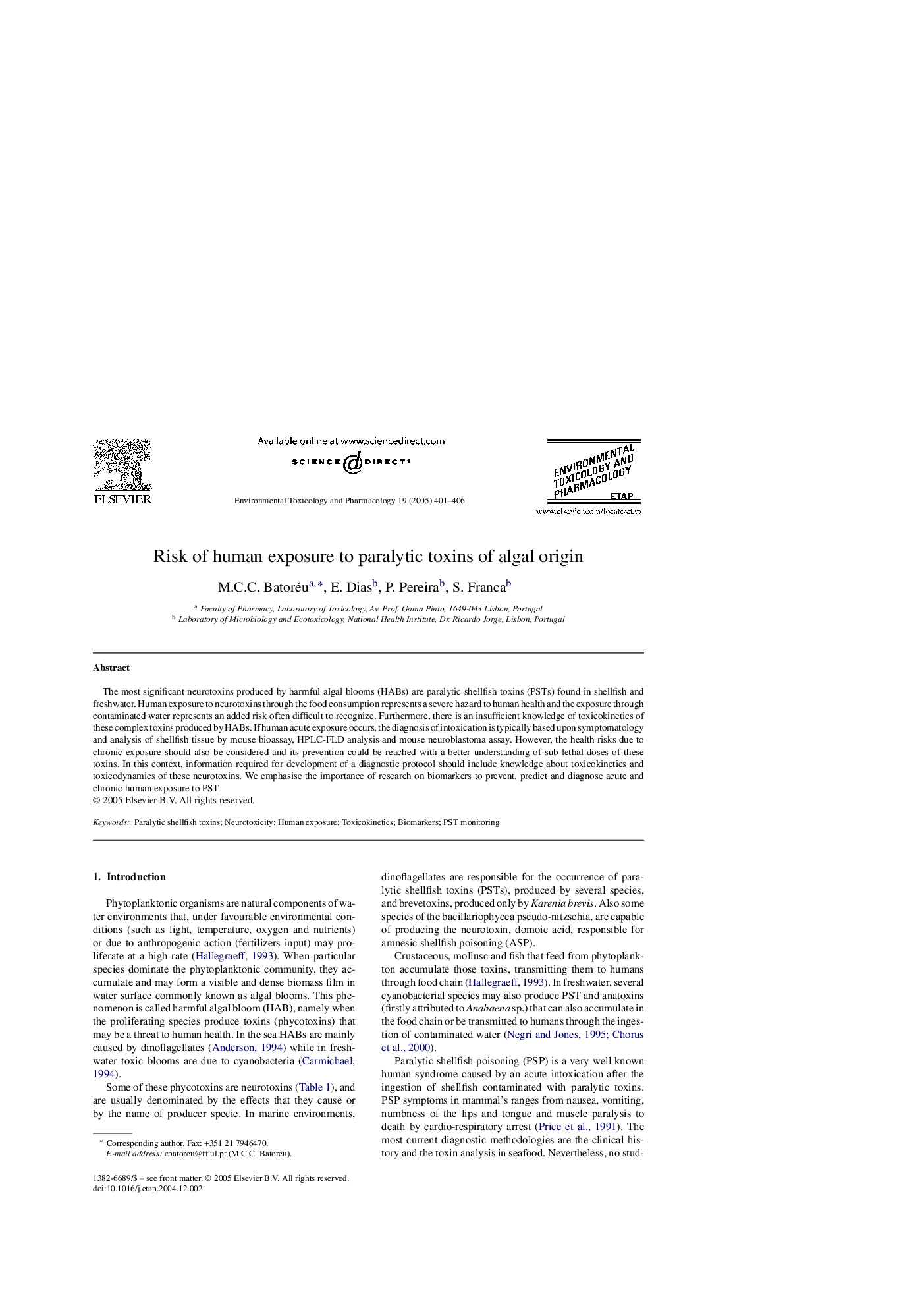| Article ID | Journal | Published Year | Pages | File Type |
|---|---|---|---|---|
| 9030058 | Environmental Toxicology and Pharmacology | 2005 | 6 Pages |
Abstract
The most significant neurotoxins produced by harmful algal blooms (HABs) are paralytic shellfish toxins (PSTs) found in shellfish and freshwater. Human exposure to neurotoxins through the food consumption represents a severe hazard to human health and the exposure through contaminated water represents an added risk often difficult to recognize. Furthermore, there is an insufficient knowledge of toxicokinetics of these complex toxins produced by HABs. If human acute exposure occurs, the diagnosis of intoxication is typically based upon symptomatology and analysis of shellfish tissue by mouse bioassay, HPLC-FLD analysis and mouse neuroblastoma assay. However, the health risks due to chronic exposure should also be considered and its prevention could be reached with a better understanding of sub-lethal doses of these toxins. In this context, information required for development of a diagnostic protocol should include knowledge about toxicokinetics and toxicodynamics of these neurotoxins. We emphasise the importance of research on biomarkers to prevent, predict and diagnose acute and chronic human exposure to PST.
Related Topics
Life Sciences
Environmental Science
Health, Toxicology and Mutagenesis
Authors
M.C.C. Batoréu, E. Dias, P. Pereira, S. Franca,
